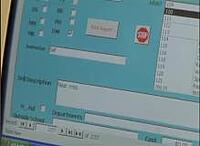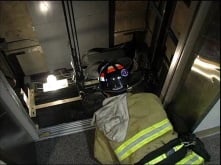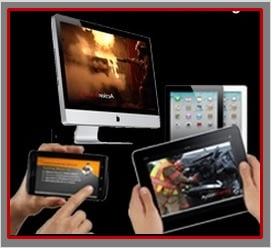Seven Upper Kittitas County, Washington fire departments recently received fire training grants from Life Support to purchase interactive video training courses delivered in the all new online platform from Action Training Systems (ATS). These programs are a valuable instructor resource used to make training more accessible for their volunteers and make their classroom and hands on training more effective.
Since its inception in August 1999, Life Support has worked diligently to raise funds to improve the Emergency Medical Services and Health Care of Upper Kittitas County and surrounding communities. Life Support, which began with five community members, has since grown to over 30 dedicated volunteers and is guided by an elite Board of Directors.
With budgets being cut, many departments and emergency response organizations are left with little or no money to purchase the quality training they desperately need. Life Support and ATS are teaming up to offer a convenient and affordable solution to provide that training.
With the new ATS Online, students are able to access interactive video courses from any PC or Mac with a decent internet connection, from any location, 24/7. Student activity and test scores are automatically recorded and the training records are accessible by instructors from any computer. Reports can be automatically emailed to key department personnel or anyone else needing access to training information.
ATS has produced over 200 training programs for emergency response professionals. Now they are all available online as interactive video training courses or streaming videos. ATS training courses are designed not to replace hands-on training, but as another tool for instructors to incorporate into their training programs to support and enhance essential education.
“Customers view Action Training Systems as a company that has their best interest in mind,” said George Avila, CEO and founder of Action Training Systems. “We know how important meaningful training is in the emergency response community and we will always strive to meet or exceed their needs.
Instructors worldwide, from South Korea to Saskatchewan, find the quality of ATS standards-based, competency-driven training programs to be superior. Now with access to these learning resources from anywhere, anytime, ATS Online and Life Support are transforming both the instructor’s and students’ learning experience in Upper Kittitas County. High quality video training is no longer confined to their classroom environment.
Life Support founder and President Cheri Marusa states the Upper Kittitas County fire departments are excited about the opportunity to train with this world class learning platform.
"Training is the backbone for all fire fighters. The Fire Chiefs of Upper Kittitas County have shared with me that they are very happy to have ATS for their volunteers," says Marusa. “With ATS programs, students have shown increased competency in course content. Comprehension is essential to keeping both our firefighters and their communities safe and we will do everything in our power to train our students with that goal in mind.”










 For instance, your jurisdiction may have a highly developed downtown area, and you may notice that your department has performed several elevator rescues in recent years. This information may motivate you to update your team’s elevator rescue training and review the elevator surveys of the buildings within your jurisdiction.
For instance, your jurisdiction may have a highly developed downtown area, and you may notice that your department has performed several elevator rescues in recent years. This information may motivate you to update your team’s elevator rescue training and review the elevator surveys of the buildings within your jurisdiction. Online learning is HOT and for a very good reason. Many departments and organizations around the world are turning to online training/learning as a way to decrease costs and improve the learners performance. Also, unlike a one-time classroom session, the online learning course is available to be accessed anywhere and can be reviewed a number of times to enhance the learners comprehension.
Online learning is HOT and for a very good reason. Many departments and organizations around the world are turning to online training/learning as a way to decrease costs and improve the learners performance. Also, unlike a one-time classroom session, the online learning course is available to be accessed anywhere and can be reviewed a number of times to enhance the learners comprehension.
 ATS Cameraman Sjon Johnson, self-taught moulage artist applies a thermal burn to actor Evan.
ATS Cameraman Sjon Johnson, self-taught moulage artist applies a thermal burn to actor Evan.
 Here’s Carly’s “after” shot. We’ve never seen someone so cheerful while covered in fake blood.
Here’s Carly’s “after” shot. We’ve never seen someone so cheerful while covered in fake blood.
 In this scene, we needed to illustrate how to care for a thermal burn. Capturing the characteristics of second-and third-degree burns takes a lot of finesse. Aside from the redness, we wanted to show peeling, charred skin as well.
In this scene, we needed to illustrate how to care for a thermal burn. Capturing the characteristics of second-and third-degree burns takes a lot of finesse. Aside from the redness, we wanted to show peeling, charred skin as well. Here’s how it looked in the final scene. Notice the peeling and the redness? This kind of burn is intensely painful, but Dennis didn’t have to feel a thing. Thanks again to our responders, Troy, Greg & Michael for their participation that day.
Here’s how it looked in the final scene. Notice the peeling and the redness? This kind of burn is intensely painful, but Dennis didn’t have to feel a thing. Thanks again to our responders, Troy, Greg & Michael for their participation that day.
 Here’s our actor, William Michael Paul, in the makeup chair before the shoot. For this scenario our in-house moulage artist and cameraman, Sjon Johnson created the illusion of injury. Sjon spent many hours ahead of time, researching, molding and prefabricating silicon wounds for William’s face.
Here’s our actor, William Michael Paul, in the makeup chair before the shoot. For this scenario our in-house moulage artist and cameraman, Sjon Johnson created the illusion of injury. Sjon spent many hours ahead of time, researching, molding and prefabricating silicon wounds for William’s face.
